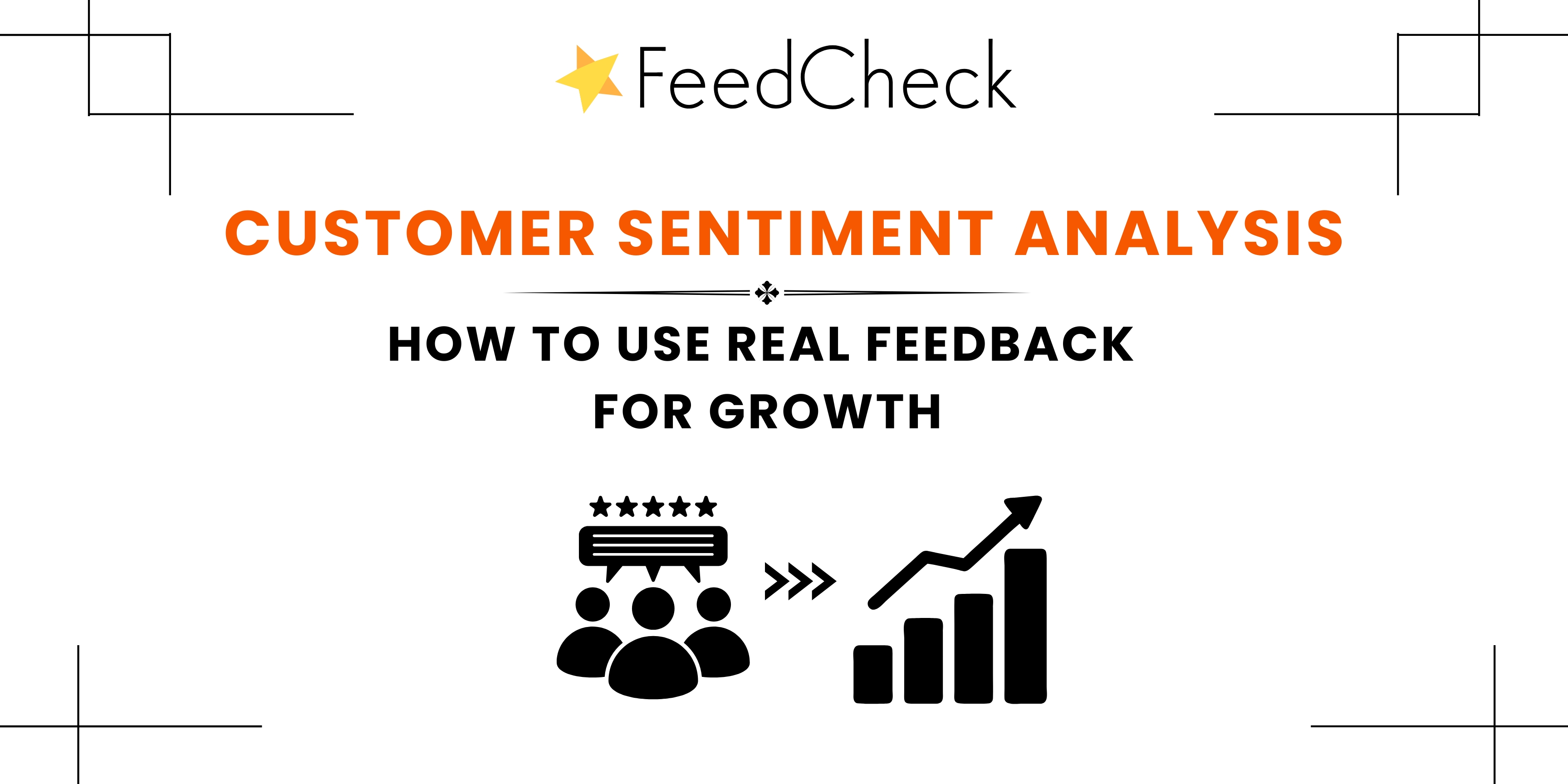In a world in which customer reviews are everywhere, brands need to start seeing them for what they really are: rich, essential insights into how people feel about your brand. And when 19% of consumers trust reviews as much as personal recommendations, their value becomes clear.
Customer sentiment analysis is the process of interpreting these emotions expressed in reviews, giving businesses a strategic edge in understanding their audience. Real feedback from customers becomes the raw material for this process, offering a goldmine of opportunities to refine services, improve products, and enhance the overall customer experience.
That’s why businesses should take advantage of real feedback in powering customer sentiment analysis, supporting everything from review monitoring to brand reputation management.
Managing online reputation and monitoring reviews
Managing online reputation is a foundational element of modern brand strategy. The proliferation of online platforms (such as review sites, social media, or forums) means that customer voices are everywhere. Those voices directly influence public perception – according to Statista, more than half of consumer trust reviews to lead their purchase or booking decisions.
Review monitoring refers to the continuous observation and analysis of customer reviews across all relevant platforms. Whether it’s through product review monitoring on eCommerce sites or restaurant review monitoring on apps like Google or TripAdvisor, businesses need to know what is being said and where. This monitoring provides the basis for timely responses, issue detection, and trend identification.
But beyond immediate response, monitoring reviews plays a key role in understanding overall performance. When companies gather and analyze reviews at scale, they can extract meaningful insights that individual comments alone might not reveal.
Understanding the aggregated reviews means interpreting the collective message with hundreds, or even thousands of reviews. This is where sentiment analysis comes into play, transforming unstructured feedback into structured, strategic information.
Aggregated feedback provides a zoomed-out view of brand performance, identifying recurring topics and concerns. For multi-location brands in particular, this process helps detect which locations are excelling, and which are underperforming, often before the trends show up. It also highlights inconsistencies in service or experience, which are critical for maintaining a consistent brand reputation online.

What review analysis means
Review analysis goes a step further than simply observing customer opinions. It’s the deliberate process of dissecting those reviews to uncover actionable insights.
Review analysis can expose gaps in customer experience, product performance, or operational efficiency. By analyzing aggregated product reviews, businesses can see which features are praised or criticized most frequently. In retail, this could mean uncovering packaging faults, or issues with delivery. In hospitality, it might reveal recurring complaints about wait times or cleanliness. These insights support both short-term fixes and long-term strategy development.
However, with the volume of reviews increasing daily, manual methods of review analysis are no longer suitable for most businesses. Instead, companies turn to review management software to handle the complexity.
These tools allow businesses to aggregate customer reviews from a wige range of sources, making the process of review analysis more efficient and insightful. A powerful platform like FeedCheck supports both review aggregation and analysis by collecting feedback from all relevant channels into one dashboard. It provides not just a space to check reviews, but a comprehensive system for understanding them.
FeedCheck is designed to grow with a business as it scales, while optimizing it’s review monitoring strategy. If you’re curious how FeedCheck can ease feedback analysis, schedule a demo to see first-hand how we can help you out.
What insights to get from customer sentiment
Customer sentiment analysis is the technique of assessing customer feedback to determine the emotional tone behind words. Unlike basic rating systems, sentiment analysis goes beyond the star score and looks into the language used to express opinions. It classifies reviews as positive, negative, or neutral, and often detects subtler emotions like frustration, excitement, or disappointment.
This kind of analysis helps businesses understand what drives customer satisfaction and dissatisfaction. Rather than just knowing a customer left a two-star review, sentiment analysis uncovers whether that dissatisfaction stemmed from pricing, delays, poor service, or a combination. The result is a more precise picture of how customers are feeling and why that is.
As many as 20% of people leave reviews because they want to be heard – but then it becomes the business’ responsibility to acknowledge feedback and take action to improve things.
Customer sentiment analysis can guide strategic decisions in almost every part of a business. If a company notices recurring negative sentiment about product durability, the product team can investigate design issues. Similarly, if customers praise customer service in one region, but criticize it in another, then clearly there’s an issue of operational practices needing alignment. For multi-location brands, this allows for targeted intervention, helping protect brand reputation online and improve consistency.
The value of sentiment analysis lies in its real-time application. By continuously analyzing reviews as they come in, brands can react quickly and shift strategies where needed. This agility can lead to a measurable increase in in-person sales when pain points are addressed promptly.

Real feedback powers sentiment analysis
The effectiveness of customer sentiment analysis hinges on the quality and quantity of data fed into it. Real feedback is what makes the process meaningful. To get the most from sentiment analysis, companies must engage with genuine, unsolicited feedback gathered from various platforms.
Aggregated feedback ensures that this data reflects a comprehensive view of customer experiences. Using a review aggregation strategy, companies combine insights from product pages, app stores, social media comments, and third-party platforms. This approach paints a complete picture, highlighting inconsistencies.
Real feedback provides the context necessary for deeper interpretation. Analyzing the language used in reviews could reveal the real root of concern in feedback, with a high level of detail.
For businesses trying to drive foot traffic and see an increase in in-person visits, these insights are invaluable. Guest reviews for retail locations or dining establishments often contain subtle clues about atmosphere, staff demeanor, or layout, factors which heavily influence other visits. Analyzing this type of guest feedback allows businesses to make adjustments that improve the customer journey based on real customer reviews, leading to better outcomes.
Conclusion
Customer sentiment analysis is one of the most powerful tools available to brands today. It empowers businesses to move beyond surface-level reviews and tap into the deeper emotions and expectations of their audience.
Through review aggregation, intelligent review analysis, and careful monitoring, companies can create a feedback loop that fuel continuous improvement.
To manage online reputation effectively, companies must adopt tools that support review aggregation and online review management services. FeedCheck is one of the leading review monitoring and reputation management software solutions. Whether you’re a retailer, a restaurant group, or a multi-location brand, FeedCheck helps translate reviews into real business value.
Real feedback is the foundation of meaningful customer sentiment analysis. With the right tools and approach, every comment becomes an opportunity to improve. Start managing your reputation with purpose and use FeedCheck to turn insights into impact. Contact us for more information.
